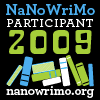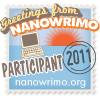Outline vs. Free Flow Writing: Using Them in Your Writings
This is the third installment of the Writing Series. Go here to learn more about the series and find more titles.
In all forms of writing there’s a period of brainstorming and planning. What happens after that is the bases of this post. Outlining and Free Flow writing can be beneficial to all genre writers be it fiction or non-fiction. I use a combination of both outlining and free flowing when writing my manuscripts and blog posts. As always I’ll start with a quick definition of each. To outline (in the purpose of this post) is to give a general summary of a written work that covers the main part of the text. Free Flow Writing is another form of stream of conscious writing, however it’s at a different level, with free flow writing you are in more control of your mind. You narrow your conscious down to one topic, your story. Free flow writing is more structured than stream of conscious writing but less structured than outline writing.
Using an Outline
Many of you know what a outline is so I won’t go into inane details, but how can you use the type of outline you learned in grade school to work for fiction writing? Simple. One of the first things I do when starting a new story is do a character sheet on my main characters and then a plot summary. My plot summaries can be up to two pages long and as short as a paragraph. After I’ve done this I have a better understanding of where I want the story to go.
Setting up an outline
At the top of your outline should be your title. If I haven’t figured out a title, I use the name of the main character (sometimes it sticks, hence Jade and Natalia). Start with your first chapter, some people like to give each chapter it’s own title, I personally don’t prescribed to that but that’s an individual thing. As stated before an outline is just an overview of the main points. So think of the chapter as an act, what you would be writing down is the titles of the scenes. For example, here’s a snip it of the outline for chapter one of my Jade manuscript:
Chapter 1
- Jade wakes up and mentally summarizes her day
- Dawnn calls and asks her out to lunch
- Jade meets her new neighbor, James
- Jade makes it to work and starts her day
- Nick is at the office
- His assistant goes over the day with him
- Nick reads over Jade’s personal file
See, just brief statements that gives me the general overview of what happens in that chapter. In some stories, there’s a need for a more detailed outline. Here’s a snippet from Locked Away, chapter three:
Chapter Three
- Angel had a sleepless night; a mixture of fear and Jared
- Jared got some sleep and was still asleep when Angel comes downstairs
- Angel doesn’t wake him, choosing to watch him sleep
- Styx has other plans; needs to go outside- comes and jumps on Jared
- There’s some awkwardness when Angel realizes Jared only has on boxers
- Jared laughs at her expense; she storms off.
- He and Styx go out for the walk; they discovered the two guy’s car; looks lived in for a couple of days
- He searches through it; he finds the lawyers business card with a number on it
- Comes back to the house to find Angel “dressed” and cooking
- Jared thinks she is cooking for him; but really for Styx
- “You should get dress…I want to get home soon.”
- He’s all hurt about no food; so starts mumbling to him-self as he goes and gets dressed
- Thirty minutes later they leave
Can you tell the difference? In the first outline I was short and not very descriptive, in the second one I use more of topic sentence outline. More detailed then the first but not a fully written chapter. Another version can be a dialogue outline, here you just outline the majority (or just the main highlights) of the dialogue of the chapter. This is usually helpful when you have a dialogue heavy chapter.
Implementing your Outline
Once you’ve created an outline it’s pretty easy to jumpstart the writing process. Depending on which version of an outline you decided to use depends on how you go about it. For example one, I had to take each bullet point and describe that event. Which meant adding dialogue if need be and details of setting and character actions. In example two, I had more details to work with and even some dialogue, but I still need to add setting detail and character actions. I also needed to organize the overall chapter into sections so that it flowed as best as possible, something the first example had over this one. And in the last choice, the dialogue outline, I had the dialogue to direct the flow of the chapter and just needed to add the detailing of setting and character actions.
If you chose to use an outline it’s best to work with all three before favoring one, you might find that in order to get your best writing you have to create a combination of all three.
Using Free Flow Writing
After trying outline planning you might find that it’s not for you and that’s okay. That’s what free flow writing is for. Unlike outline there is no structure in free flow writing. Like I said, you narrow you mind to one topic, your story and go from there. However there are different ways to go about free flow writing. I have one friend who does nothing but free flow writing, she refuses to use an outline. She gets on her laptop, fires up Microsoft Word and starts typing. Some days she free flows on one chapter, some days she free flows sections of different chapters. Whatever and where ever comes to mind she writes. My free flow writing happens mostly in blog posts. I give myself a topic, like say I don’t know, comparing the use of outlining and free flow writing, and go from there. The point of free flow writing is to basically make it up as you go.
Implementing Free Flow Writing
Because you are lacking a structure planning session before you start, users of free flow writing start the writing process early and can often come to several writer’s block (if that’s the case take a look at how to work through a writer’s block). But that shouldn’t deter you from using this technique. Some good ways to use it to the most is to do the plot summary before starting. If you know the overall plan then it will be easier to fill in the details of each chapter. Keep writing, no matter if you think it sucks, just keep writing. You can always edit later. Stay to one topic, it might be hard for you to switch up themes and topics if you haven’t thought ahead of what’s happening. Get and stay in tune with your characters, you might think it’s your consciousness telling you what to write, but really it’s your character’s saying “Maybe I should be doing this over there while they are doing that over here.”
Comparing the Two: the Pros and Cons
In my writing I find that I am implementing both techniques, for instant I do a free flow writing when I write out the plot summary and even when I start filling in details to my outlines during the writing process. And I use an outline when I’m free flowing from the beginning, it’s not a written outline, but a mental outline. The reason I do this is to negate the cons from each and utilize the pros to their max. Those who outline might feel the need to follow their outline to the tee. And that’s just not the case. Which is why I free flow in the detailing department, sometimes if I find that it’s just not working out, then I go with the flow until I bring it back to the next bulleted point that does work for me. A good example is in my recent update of CM, I had not outlined that chapter at all, but when I went to write the next chapter that I had outline, I felt like something was missing. So half way through, I stopped on that chapter, and wrote the other chapter and free flowed the whole thing. It worked out for the best. I always try to mentally outline when I’m free flow, this way I have some map for where I’m going and less likely to get lost. My friend usually has this probably, she get’s stuck very easily on a scene, because she doesn’t know where to go. When I’m writing out my outlines, I’m free flowing and that’s were I usually get stuck. I’m not saying that those who outline wont get stuck, so untrue. I get stuck even when I do have an outline, that’s just when I know something isn’t working. Another problem my friend has is she get’s distracted easily, to date she hasn’t complete one actual work, and she’s been writing longer than I have. She has pieces of stories, chapters, introductions, paragraphs and even conclusions to several different stories but nothing completed. Again I’m not saying that those who outline are more prone to finish than those who don’t because that’s not true, but a good outline is key if you know that you get distracted. So when you want to come back you have something written to remind you where you were going with the story, which seems to be her problem she forgets the point of the story and then abandons it.
Is there a clear winner?
No there isn’t, a good writer in theory is using a combination of some sort from both these types of writing styles. The key is to find the right mixture that works for you.

Filed under: Writing Process, Writing Series | 1 Comment
Tags: My Thoughts, Writing Series







Great site, I will be back. Well done